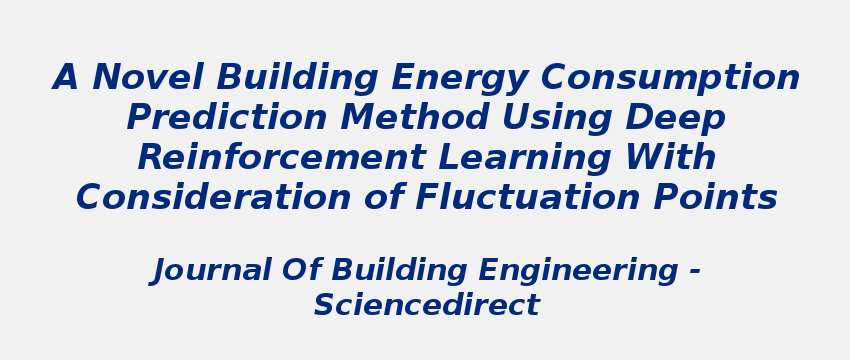Research Area: Machine Learning
Accurate building energy consumption prediction plays an irreplaceable role in building energy-saving fields. Deep Reinforcement Learning (DRL), as an innovative artificial intelligence method, has been increasingly applied to prediction problems. The existing prediction methods suffer from the fluctuation points of the energy consumption, and the prediction accuracy of the fluctuation points is often difficult to be guaranteed because the fluctuation points are often sparse and irregular. This paper proposes a novel building energy consumption prediction method using DRL with consideration of fluctuation points. Firstly, since the energy consumption is time-dependent, the timestamp features of the energy consumption data are extracted, which can potentially improve the final prediction accuracy and help solve the subsequent fluctuation point problem. Then, according to the fluctuation point types defined by the fluctuation degree, the fluctuation point features are obtained by the Deep Forest method. Finally, the prediction problem is modeled as a Markov Decision Process (MDP), where the prediction result can be considered an action selection in DRL. Additionally, by using timestamp and fluctuation point features, the state space is enriched, and meanwhile the action space is reduced, which can help the DRL agent to make the correct decision when it encounters fluctuation points. Experimental results show that the proposed method achieves higher prediction accuracy and more stable convergence than the other eight comparable methods. Moreover, compared to the representative DRL method—Deep Deterministic Policy Gradient (DDPG) method, MAE, MAPE, and RMSE are decreased by 7.15%, 12.71%, and 18.33%, respectively, and is increased by 1.3%.
Keywords:
Author(s) Name: Wei Jin, Qiming Fu, Jianping Chen, Yunzhe Wang, Lanhui Liu, You Lu , Hongjie Wu
Journal name: Building Engineering
Conferrence name:
Publisher name: ScienceDirect
DOI: 10.1016/j.jobe.2022.105458
Volume Information: Volume 63, (2023)
